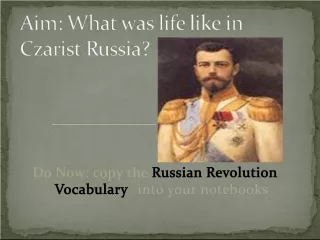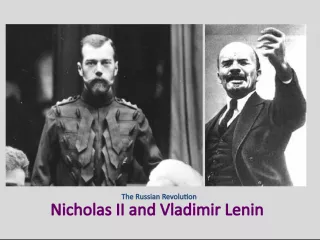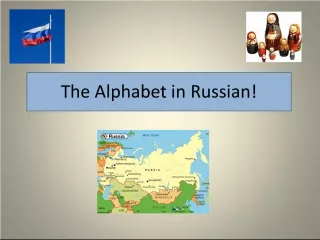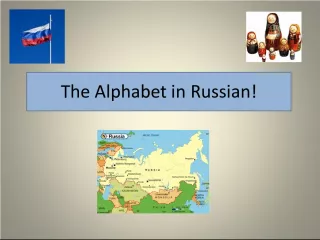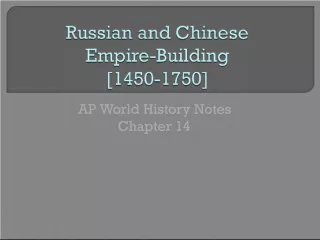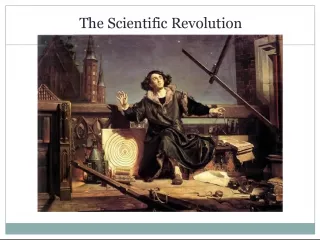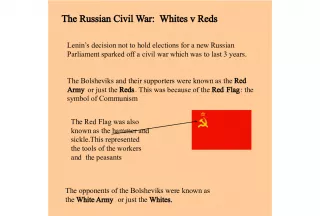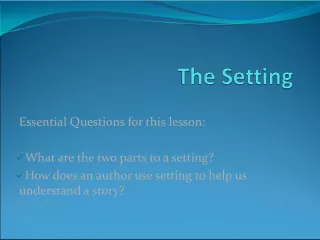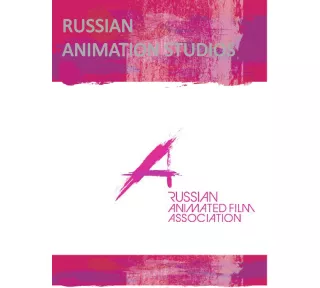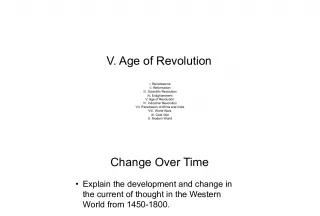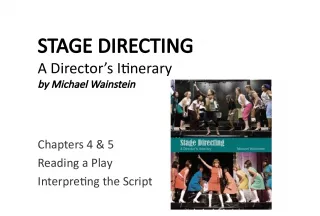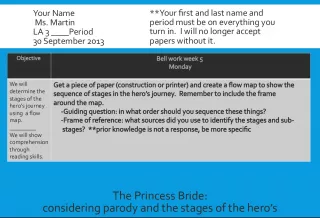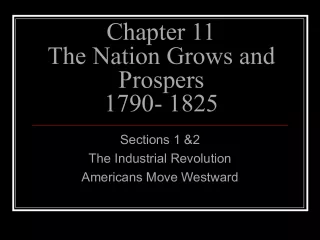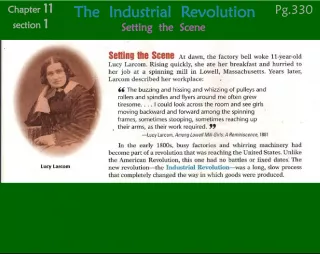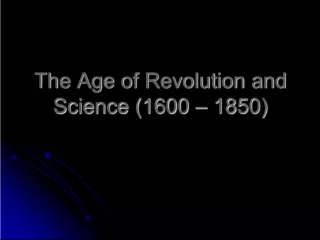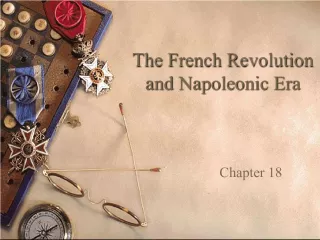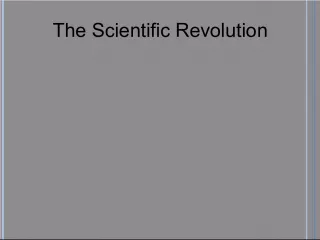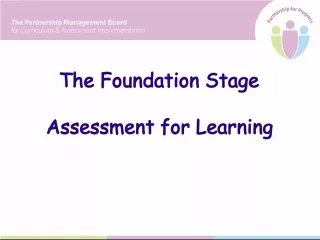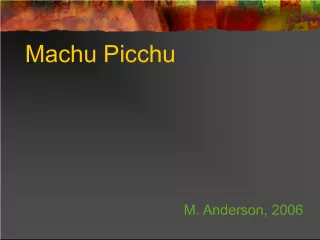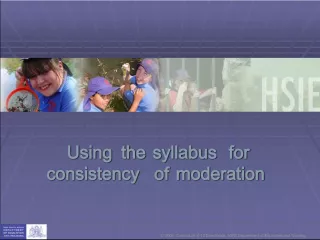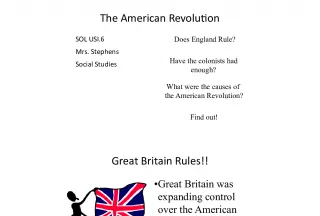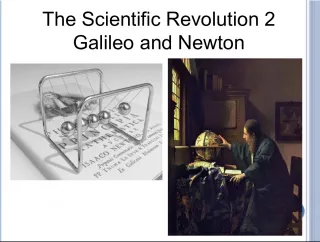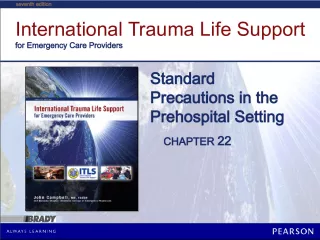"World War I and the Russian Revolution: Setting the Stage and A New Kind of War"


This section of "The Human Journey" explores the lead up to World War I and the Russian Revolution. "Setting the Stage for War
- Uploaded on | 2 Views
-
 gino
gino
About "World War I and the Russian Revolution: Setting the Stage and A New Kind of War"
PowerPoint presentation about '"World War I and the Russian Revolution: Setting the Stage and A New Kind of War"'. This presentation describes the topic on This section of "The Human Journey" explores the lead up to World War I and the Russian Revolution. "Setting the Stage for War. The key topics included in this slideshow are . Download this presentation absolutely free.
Presentation Transcript
Slide1HOLTHOLT World History World History THE HUMAN JOURNEY THE HUMAN JOURNEY HOLT, RINEHART AND WINSTON World War I and the Russian Revolution World War I and the Russian Revolution Section 1: Setting the Stage for War Section 1: Setting the Stage for War Section 2: World War I: A New Kind of War Section 2: World War I: A New Kind of War Section 3: The Russian Revolution Section 3: The Russian Revolution Section 4: The Terms of Peace Section 4: The Terms of Peace Section 5: Creating a “New” Europe Section 5: Creating a “New” Europe CHAPTER 27
Slide2HOLTHOLT World History World History THE HUMAN JOURNEY THE HUMAN JOURNEY HOLT, RINEHART AND WINSTON 2 Objectives: Objectives: Explain why rivalries increased among European nations. Explain why rivalries increased among European nations. Identify the military alliances that existed at the beginning of World War I and explain how they changed by late 1915. Identify the military alliances that existed at the beginning of World War I and explain how they changed by late 1915. Explain why the Balkans were a “powder keg.” Explain why the Balkans were a “powder keg.” Section 1: Section 1: Setting the Stage for War Setting the Stage for War
Slide3HOLTHOLT World History World History THE HUMAN JOURNEY THE HUMAN JOURNEY HOLT, RINEHART AND WINSTON 3 Nationalism, Imperialism, and Militarism Nationalism, Imperialism, and Militarism Europeans leaders thought their goals could only be achieved by force Europeans leaders thought their goals could only be achieved by force Section 1: Section 1: Setting the Stage for War Setting the Stage for War
Slide4HOLTHOLT World History World History THE HUMAN JOURNEY THE HUMAN JOURNEY HOLT, RINEHART AND WINSTON 4 The System of Alliances The System of Alliances The Triple Alliance – Italy, Germany, and Austria-Hungary The Triple Alliance – Italy, Germany, and Austria-Hungary The Triple Entente – France, Russia, and Great Britain The Triple Entente – France, Russia, and Great Britain Section 1: Section 1: Setting the Stage for War Setting the Stage for War
Slide5HOLTHOLT World History World History THE HUMAN JOURNEY THE HUMAN JOURNEY HOLT, RINEHART AND WINSTON 5 The Balkan “Powder Keg” The Balkan “Powder Keg” Provided outlet to the sea Provided outlet to the sea Pan-Slavism Pan-Slavism Section 1: Section 1: Setting the Stage for War Setting the Stage for War
Slide6HOLTHOLT World History World History THE HUMAN JOURNEY THE HUMAN JOURNEY HOLT, RINEHART AND WINSTON 6 Mobilization of Europe Mobilization of Europe Russia supported Serbia Russia supported Serbia Germany disregarded Belgian neutrality Germany disregarded Belgian neutrality Section 1: Section 1: Setting the Stage for War Setting the Stage for War
Slide7HOLTHOLT World History World History THE HUMAN JOURNEY THE HUMAN JOURNEY HOLT, RINEHART AND WINSTON 7 The War Expands The War Expands Japan joined Great Britain and France Japan joined Great Britain and France Italy signed secret treaty with Great Britain, France and Russia for share of spoils Italy signed secret treaty with Great Britain, France and Russia for share of spoils Ottoman Empire and Bulgaria joined Austria- Hungary and Germany Ottoman Empire and Bulgaria joined Austria- Hungary and Germany Section 1: Section 1: Setting the Stage for War Setting the Stage for War
Slide8HOLTHOLT World History World History THE HUMAN JOURNEY THE HUMAN JOURNEY HOLT, RINEHART AND WINSTON 8 Objectives: Objectives: Identify the advantages that each side had in World War I. Identify the advantages that each side had in World War I. Explain how new technology affected the way in which World War I was fought. Explain how new technology affected the way in which World War I was fought. Explain what led the United States to join the Allied Powers. Explain what led the United States to join the Allied Powers. Section 2: Section 2: World War I: A New Kind of War World War I: A New Kind of War
Slide9HOLTHOLT World History World History THE HUMAN JOURNEY THE HUMAN JOURNEY HOLT, RINEHART AND WINSTON 9 The Belligerents The Belligerents Central Powers had more rapid communications and movement, and better army Central Powers had more rapid communications and movement, and better army Allied Powers had more soldiers, better industry, and better navy Allied Powers had more soldiers, better industry, and better navy Section 2: Section 2: World War I: A New Kind of War World War I: A New Kind of War
Slide10HOLTHOLT World History World History THE HUMAN JOURNEY THE HUMAN JOURNEY HOLT, RINEHART AND WINSTON 10 Innovations in Warfare Innovations in Warfare Machine gun Machine gun U-boat U-boat Poison gas airplane Poison gas airplane Tank Tank Section 2: Section 2: World War I: A New Kind of War World War I: A New Kind of War
Slide11HOLTHOLT World History World History THE HUMAN JOURNEY THE HUMAN JOURNEY HOLT, RINEHART AND WINSTON 11 Early Years of the War Early Years of the War Fighting on Gallipoli Fighting on Gallipoli Naval warfare Naval warfare The stalemate – a war of attrition The stalemate – a war of attrition Section 2: Section 2: World War I: A New Kind of War World War I: A New Kind of War
Slide12HOLTHOLT World History World History THE HUMAN JOURNEY THE HUMAN JOURNEY HOLT, RINEHART AND WINSTON 12 The United States and World War I The United States and World War I Contraband Contraband Propaganda about German atrocities Propaganda about German atrocities Democratic ideals Democratic ideals Section 2: Section 2: World War I: A New Kind of War World War I: A New Kind of War
Slide13HOLTHOLT World History World History THE HUMAN JOURNEY THE HUMAN JOURNEY HOLT, RINEHART AND WINSTON 13 Objectives: Objectives: Identify the events that led to the Russian Revolution. Identify the events that led to the Russian Revolution. Explain how the Communists came to power. Explain how the Communists came to power. Explain how Russia’s revolution affected its participation in World War I. Explain how Russia’s revolution affected its participation in World War I. Section 3: Section 3: The Russian Revolution The Russian Revolution
Slide14HOLTHOLT World History World History THE HUMAN JOURNEY THE HUMAN JOURNEY HOLT, RINEHART AND WINSTON 14 Russia in World War I Russia in World War I Poverty Poverty Suppression of democracy Suppression of democracy Weak Duma Weak Duma Section 3: Section 3: The Russian Revolution The Russian Revolution
Slide15HOLTHOLT World History World History THE HUMAN JOURNEY THE HUMAN JOURNEY HOLT, RINEHART AND WINSTON 15 Lenin and the Bolsheviks Lenin and the Bolsheviks Appealed to the poor Russian masses Appealed to the poor Russian masses Formed basis of communism Formed basis of communism Section 3: Section 3: The Russian Revolution The Russian Revolution
Slide16HOLTHOLT World History World History THE HUMAN JOURNEY THE HUMAN JOURNEY HOLT, RINEHART AND WINSTON 16 Peace and Civil War Peace and Civil War Lenin signed peace treaty with Central Powers Lenin signed peace treaty with Central Powers Communists fought socialist opposition Communists fought socialist opposition Section 3: Section 3: The Russian Revolution The Russian Revolution
Slide17HOLTHOLT World History World History THE HUMAN JOURNEY THE HUMAN JOURNEY HOLT, RINEHART AND WINSTON 17 Objectives: Objectives: Define the Fourteen Points. Define the Fourteen Points. Explain how the war ended. Explain how the war ended. Identify the disagreements that the peacemakers faced. Identify the disagreements that the peacemakers faced. Section 4: Section 4: The Terms of Peace The Terms of Peace
Slide18HOLTHOLT World History World History THE HUMAN JOURNEY THE HUMAN JOURNEY HOLT, RINEHART AND WINSTON 18 The Fourteen Points The Fourteen Points Six general points to ensure a just and safer world Six general points to ensure a just and safer world Eight points dealt with specific regions and countries Eight points dealt with specific regions and countries Section 4: Section 4: The Terms of Peace The Terms of Peace
Slide19HOLTHOLT World History World History THE HUMAN JOURNEY THE HUMAN JOURNEY HOLT, RINEHART AND WINSTON 19 Defeat of the Central Powers Defeat of the Central Powers Arrival of American troops Arrival of American troops Revolution in Austria-Hungary Revolution in Austria-Hungary Section 4: Section 4: The Terms of Peace The Terms of Peace
Slide20HOLTHOLT World History World History THE HUMAN JOURNEY THE HUMAN JOURNEY HOLT, RINEHART AND WINSTON 20 The Paris Peace Conference The Paris Peace Conference Problems facing the peacemakers – some countries were excluded; territorial conflicts Problems facing the peacemakers – some countries were excluded; territorial conflicts Reparations and peacekeeping – Allies wanted Germany to pay; League of Nations Reparations and peacekeeping – Allies wanted Germany to pay; League of Nations Section 4: Section 4: The Terms of Peace The Terms of Peace
Slide21HOLTHOLT World History World History THE HUMAN JOURNEY THE HUMAN JOURNEY HOLT, RINEHART AND WINSTON 21 What Kind of Peace? What Kind of Peace? Paris Peace Conference – conflicting viewpoints Paris Peace Conference – conflicting viewpoints United States wanted fair settlement United States wanted fair settlement Many Allies wanted to punish Germany and break it up into regions occupied by Allied forces Many Allies wanted to punish Germany and break it up into regions occupied by Allied forces Section 4: Section 4: The Terms of Peace The Terms of Peace
Slide22HOLTHOLT World History World History THE HUMAN JOURNEY THE HUMAN JOURNEY HOLT, RINEHART AND WINSTON 22 Objectives: Objectives: Identify the terms of the Treaty of Versailles. Identify the terms of the Treaty of Versailles. Explain how territories were redivided after the war. Explain how territories were redivided after the war. Explain how the League of Nations was structured. Explain how the League of Nations was structured. Section 5: Section 5: Creating a “New” Europe Creating a “New” Europe
Slide23HOLTHOLT World History World History THE HUMAN JOURNEY THE HUMAN JOURNEY HOLT, RINEHART AND WINSTON 23 The Treaty of Versailles The Treaty of Versailles No draft No draft Maximum of 100,000 men Maximum of 100,000 men No heavy artillery, military planes, or submarines No heavy artillery, military planes, or submarines Section 5: Section 5: Creating a “New” Europe Creating a “New” Europe
Slide24HOLTHOLT World History World History THE HUMAN JOURNEY THE HUMAN JOURNEY HOLT, RINEHART AND WINSTON 24 Fates of Former Territories Fates of Former Territories Ethnic populations Ethnic populations Bulgaria, the Ottoman Empire, and Russia Bulgaria, the Ottoman Empire, and Russia Section 5: Section 5: Creating a “New” Europe Creating a “New” Europe
Slide25HOLTHOLT World History World History THE HUMAN JOURNEY THE HUMAN JOURNEY HOLT, RINEHART AND WINSTON 25 The League of Nations The League of Nations Organization – assembly, council, secretariat, World Court Organization – assembly, council, secretariat, World Court Mandates – colonies of defeated powers ruled by “advanced” governments Mandates – colonies of defeated powers ruled by “advanced” governments The start of the League – 42 member nations grew to 59 by the 1940s The start of the League – 42 member nations grew to 59 by the 1940s Section 5: Section 5: Creating a “New” Europe Creating a “New” Europe
